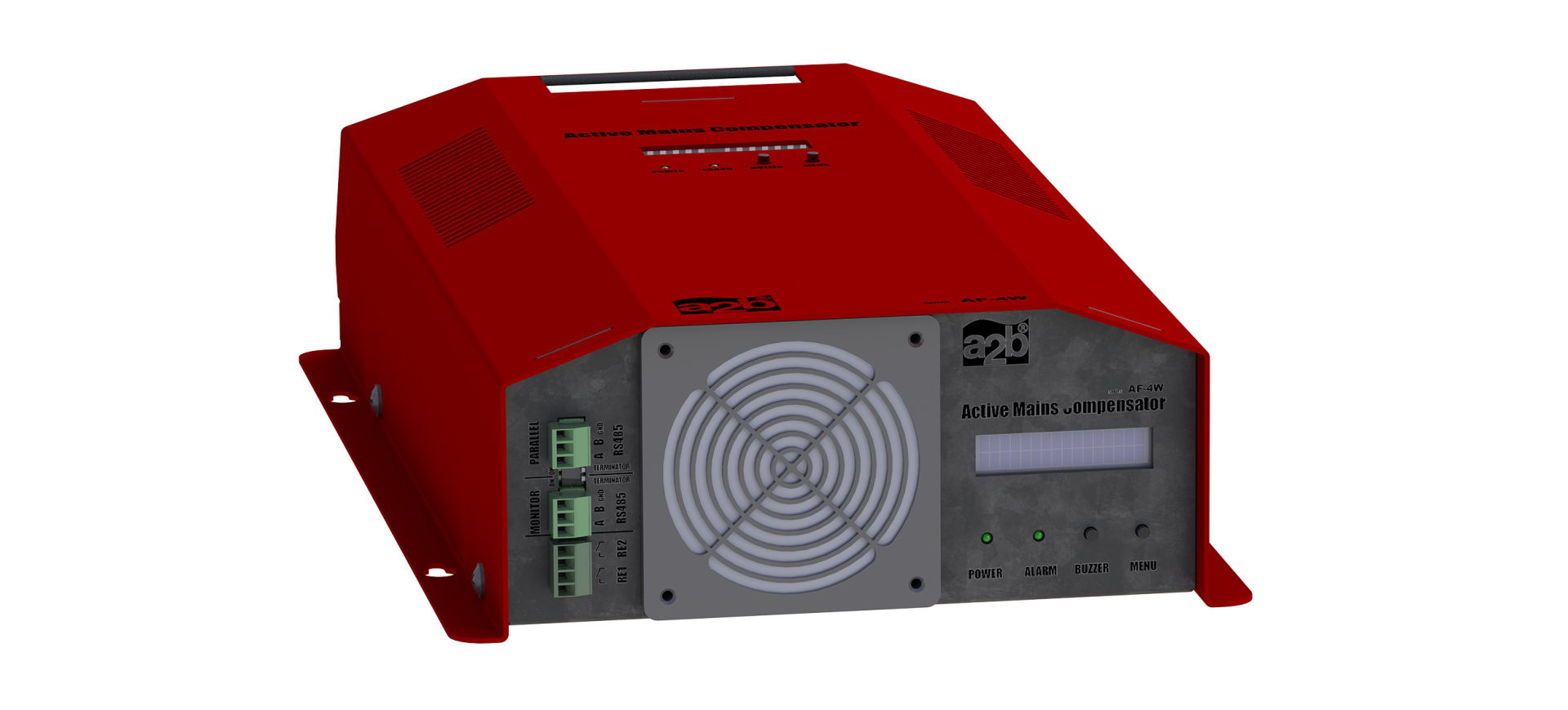The company A2B presents a solution to the issue of reactive energy with an emphasis on sustainability and economic efficiency. Considering the energy billing fees, it is advantageous to set the intake for inductive reactive energy with cosф > 0.95 when only the energy of the active component [kWh]
The cost of electrical energy consists of two items, active power (kW) and reactive power (kVAr). The reactive power can have capacitive or inductive characteristics. Both items are billed according to the regulations set by the Regulatory Office in each country.
- reactive energy of a capacitive character – defined as supply of electric energy (kVArh)
- reactive energy of an inductive character – defined as loss during supply of electric energy (kVArh).
Both of these items compensate each other during operation, but their amounts are never equal to zero under normal conditions and as such, in regard to the billing fees of the electric energy, it is more efficient to set the reactive electric energy for the inductive property with power factor cosϕ > 0.95, as it results in billing fees only for the active power (kWh) with penalty fees not billed.
Main advantages of the power factor correction device
- Saving consumer’s costs by compensating the reactive power, which can contribute to annual financial savings of up to hundreds of EUR, depending on the electric energy consumption on consumer’s side. (SSE)With an assumed minimum lifetime of 15 years, it is more than 25,000 euros. Savings may vary slightly depending on the distribution company.
- Electronic correction power factor – capacitive and inductive items.
- Fulfils the role of a specified compensator, eliminating the impact of reactive load on the electric network supply.
- Unlike passive compensator, it can dynamically adapt correction load and generate corrective current that results in eliminating reactive energy values to almost zero.
- Each phase is compensated separately, so the compensator can compensate simultaneously, for example, two phases with an inductive power component and one with a capacitive one, or vice versa.
- The power loss of the compensator is significantly lower compared to the passive filter at the same level of compensation.
- The space requirement compared to passive filters is significantly lower.
- Significantly smaller power losses of the power factor correction device in comparison with a passive compensator (using identical operational parameters).

